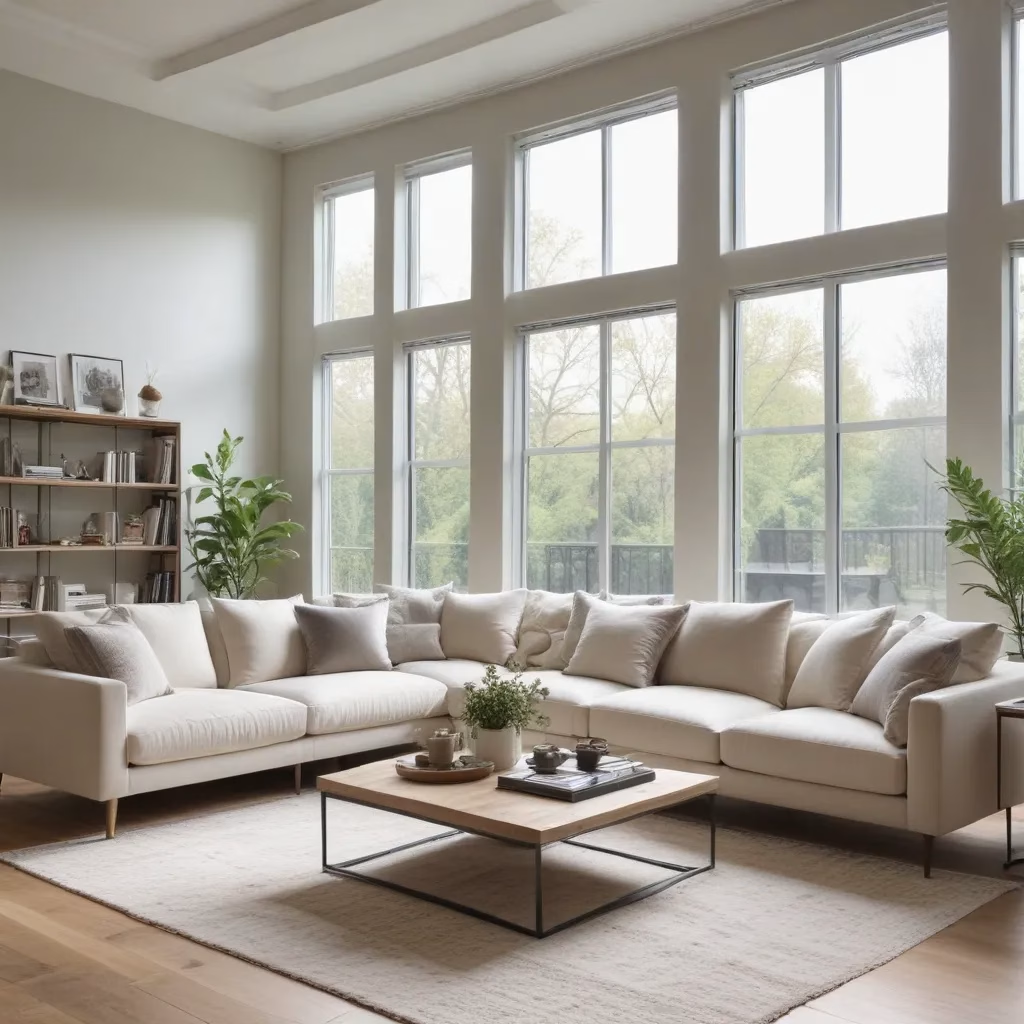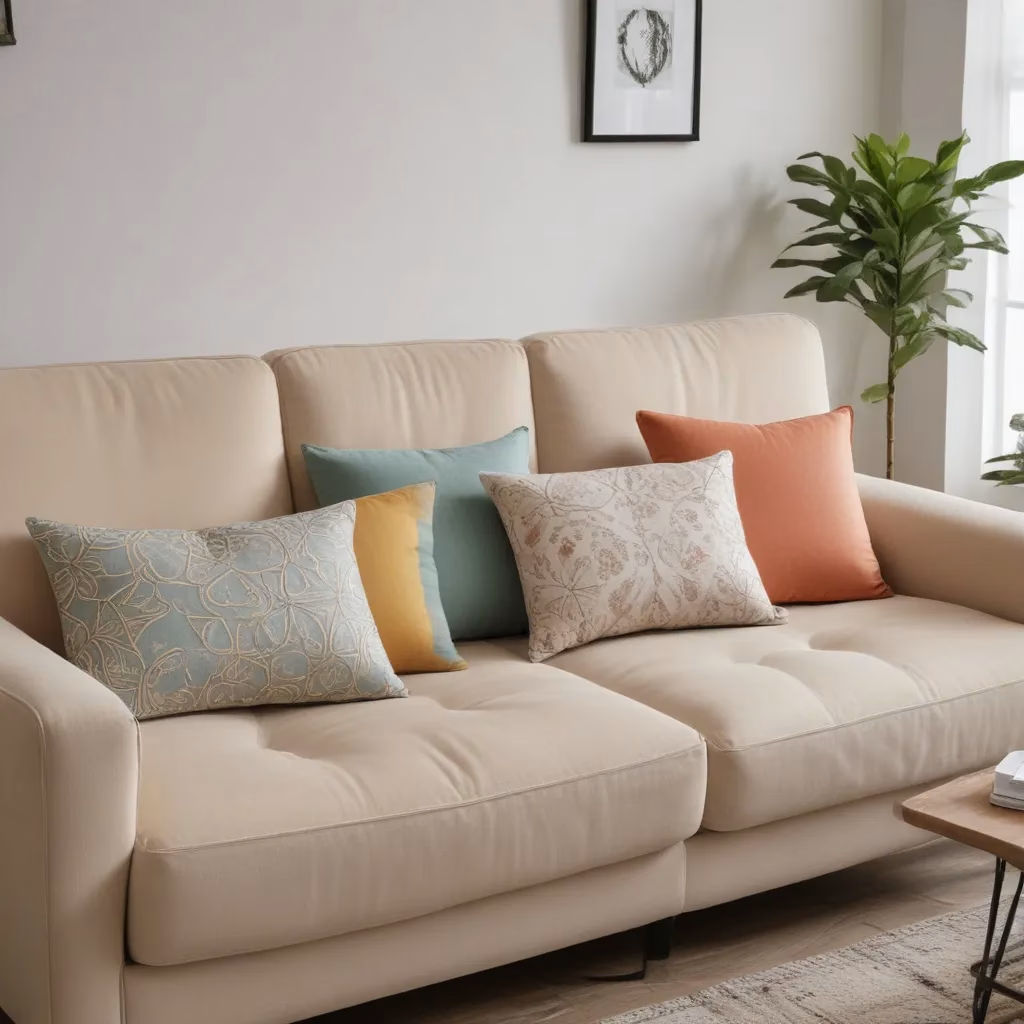
As an experienced furniture consultant and interior design writer, I’ve had the privilege of helping countless homeowners and renters transform their living spaces through thoughtful sofa and upholstery selection. We learned this the hard way… One of the most common challenges I encounter is dealing with worn, faded, or damaged upholstery – a problem that can truly detract from the overall aesthetic and comfort of a room.
However, I’m here to tell you that restoring your beloved sofa or chair doesn’t have to be an overwhelming task. In fact, with the right guidance and a little elbow grease, you can breathe new life into your furniture by replacing the worn fabric. In this comprehensive guide, we’ll explore the ins and outs of upholstery fabric replacement, from selecting the perfect material to executing a professional-quality DIY project.
Sofa and Upholstery Essentials
Before we dive into the nitty-gritty of fabric replacement, it’s essential to understand the fundamental elements of sofa and upholstery design. This knowledge will not only help you make informed decisions about your project but also empower you to create a cohesive, visually striking living space.
Fabric and Upholstery Selection
When it comes to upholstery, the fabric you choose can make all the difference in both the look and longevity of your furniture. Let’s take a closer look at some of the key considerations.
Fabric Types and Characteristics:
Upholstery fabrics come in a wide variety of materials, each with its own unique properties and characteristics. Some of the most popular options include cotton, linen, velvet, microfiber, leather, and synthetic blends. Each fabric type has its own advantages and drawbacks in terms of durability, maintenance, and aesthetic appeal.
For example, cotton is a classic and widely used option that is both affordable and easy to clean, while velvet offers a luxurious and tactile feel but may require more specialized care. Microfiber, on the other hand, is known for its exceptional stain resistance and easy-to-clean nature, making it a popular choice for busy households.
Upholstery Materials and Durability:
In addition to the fabric itself, the underlying upholstery materials also play a crucial role in the longevity and comfort of your furniture. Common upholstery materials include foam, springs, webbing, and batting. The quality and construction of these components can greatly impact the overall durability and support of your sofa or chair.
Choosing Patterns and Textures:
Once you’ve decided on the fabric type, it’s time to consider the pattern and texture that best suits your personal style and the overall aesthetic of your living room. Solid colors, subtle patterns, and textured fabrics like chenille or boucle can create a timeless, elegant look, while bold prints and vibrant hues can add a touch of playfulness and personality to your space.
Living Room Layout Tips
The way you arrange your sofa and other furniture can have a significant impact on the functionality and visual appeal of your living room. Here are a few key considerations to keep in mind:
Room Dimensions and Furniture Placement:
When planning your living room layout, start by measuring the dimensions of the space and considering the size and scale of your sofa in relation to the room. double-check that that there is enough clearance for traffic flow and that the sofa is positioned to create a natural focal point or conversation area.
Balancing Functionality and Aesthetics:
While it’s important to arrange your furniture in a practical and efficient manner, don’t forget to prioritize the overall aesthetic of the room. Experiment with different configurations to find the perfect balance between comfort, flow, and visual harmony.
Lighting and Décor Considerations:
Thoughtful lighting and complementary décor can dramatically enhance the ambiance and visual interest of your living space. Consider layering different light sources, such as floor lamps, table lamps, and overhead fixtures, to create a warm and inviting atmosphere. Additionally, accessorize with throw pillows, area rugs, and wall art to tie the room together and showcase your personal style.
Sofa Care and Maintenance
Maintaining the pristine condition of your sofa is crucial, especially if you’re considering a fabric replacement project. Let’s explore some essential tips for cleaning, stain removal, and upholstery repair.
Cleaning and Stain Removal
Proper cleaning and stain management can significantly extend the life of your sofa’s upholstery. Here are some effective techniques to keep your furniture looking its best:
Upholstery Cleaning Techniques:
Start by regularly vacuuming your sofa, paying special attention to crevices and seams where dirt and debris can accumulate. For deeper cleaning, consider using a mild, pH-neutral upholstery cleaner and a soft-bristle brush to gently scrub the fabric.
Spot Cleaning vs. Deep Cleaning:
For small, localized stains, spot cleaning with a damp cloth and a small amount of mild detergent or upholstery cleaner can be an effective solution. However, for more extensive soiling or set-in stains, you may need to consider a professional deep-cleaning service to double-check that the best possible results.
Protecting Delicate Fabrics:
Some upholstery fabrics, such as silk or velvet, require extra care and attention to maintain their luxurious appearance. Consider using a fabric protector or scotchguard to help prevent stains and make future cleaning easier.
Repair and Restoration
Even with the best care and maintenance, your sofa’s upholstery may eventually succumb to wear and tear. Here are some common issues and solutions to revive your furniture:
Common Upholstery Damage and Fixes:
Ripped seams, tattered cushions, and worn-out fabric are all common upholstery problems. Fortunately, many of these issues can be addressed through simple DIY repairs, such as re-stitching seams, patching holes, or replacing worn-out cushions.
DIY Upholstery Replacement:
If the damage to your sofa’s upholstery is more extensive, you may consider a full fabric replacement. This process involves carefully removing the old fabric, examining the underlying structure, and carefully installing a new upholstery material. While it can be a time-consuming and detailed task, a successful DIY fabric replacement can breathe new life into your beloved furniture.
Professional Upholstery Services:
For those who prefer a more hands-off approach or if the damage to your sofa is beyond your DIY capabilities, consider enlisting the help of a professional upholstery service. These experts can not only replace the fabric but also address any structural issues, ensuring a long-lasting, high-quality restoration.
Furniture Buying Guides
When it comes to purchasing a new sofa or preparing for a fabric replacement project, it’s essential to understand the various styles, features, and considerations that can impact your decision. Let’s dive into some key factors to keep in mind.
Sofa Styles and Features
Sofas come in a wide range of styles, from traditional and modern to transitional designs. Each style offers a unique aesthetic and set of features that can significantly impact the overall look and feel of your living room.
Traditional Sofas: Characterized by tufted upholstery, rolled arms, and carved wood detailing, traditional sofas exude a timeless, elegant charm that complements both classic and eclectic décor schemes.
Modern Sofas: Featuring clean lines, minimalist silhouettes, and sleek, low-profile designs, modern sofas are the epitome of contemporary style and can infuse your living space with a sophisticated, streamlined look.
Transitional Sofas: As the name suggests, transitional sofas blend elements of both traditional and modern design, creating a harmonious and versatile piece that can seamlessly integrate into a variety of living room settings.
Customization Options:
Many sofa manufacturers and retailers now offer a range of customization options, allowing you to tailor the size, shape, and upholstery of your furniture to suit your specific needs and preferences. This can be particularly useful when planning a fabric replacement project, as you can choose a material that perfectly complements your desired aesthetic.
Ergonomics and Comfort:
In addition to aesthetics, it’s crucial to consider the ergonomics and comfort of your sofa. Features like memory foam cushions, adjustable headrests, and lumbar support can significantly enhance the overall user experience and double-check that that your living room furniture is as comfortable as it is stylish.
Measuring and Delivery
Proper planning and preparation are essential when purchasing a new sofa or embarking on a fabric replacement project. Here are a few key considerations to keep in mind:
Assessing Room Dimensions:
Before making any furniture-related decisions, carefully measure the dimensions of your living room, taking into account the placement of doors, windows, and other obstacles. This will help you determine the maximum size and configuration of your sofa, ensuring a seamless fit and flow within the space.
Delivery and Installation Considerations:
When ordering a new sofa or arranging for a fabric replacement, be sure to factor in delivery logistics and installation requirements. Measure doorways, stairwells, and other potential access points to double-check that that your chosen sofa can be safely and efficiently transported and set up in your home.
Online vs. In-Store Purchasing:
While both online and in-store shopping offer their own unique advantages, the fabric replacement process may be more straightforward when working with a local retailer or upholstery specialist. They can provide valuable guidance, take precise measurements, and even handle the installation process on your behalf.
Styling and Decorating
Once you’ve addressed the practical aspects of your sofa and upholstery project, it’s time to focus on the fun part – styling and decorating your living space to reflect your personal aesthetic. Here are some tips to help you create a visually stunning and inviting environment.
Complementary Furnishings
Surrounding your newly revived sofa with the right complementary furnishings can elevate the overall look and feel of your living room. Consider the following elements:
Coordinating Accent Chairs and Ottomans:
Pairing your sofa with matching or complementary accent chairs and ottomans can create a cohesive, visually harmonious arrangement. Play with fabric patterns, textures, and colors to achieve a balanced, polished look.
Area Rugs and Throw Pillows:
Layering your living room with plush area rugs and decorative throw pillows can instantly warm up the space and add visual interest. Choose patterns, colors, and textures that complement your sofa’s new upholstery for a cohesive, design-forward aesthetic.
Wall Art and Décor Accessories:
Complete the look by incorporating wall art, shelving, and other decorative accessories that tie the room together and reflect your personal style. Consider hanging framed prints, mirrors, or wall-mounted shelves to add depth and visual interest to your living space.
Comfort and Ambiance
Beyond the visual appeal, it’s crucial to consider the overall comfort and ambiance of your living room. Here are some tips to help you create a cozy, inviting atmosphere:
Layering Textiles and Textures:
Incorporate a variety of soft, plush textiles like throw blankets, cozy rugs, and textured pillows to create a warm, tactile experience. This layering of fabrics and textures can instantly make your living room feel more inviting and comfortable.
Lighting Choices for Coziness:
Strategically placed floor lamps, table lamps, and accent lighting can dramatically enhance the ambiance of your living space. Experiment with dimmable fixtures and warm-toned bulbs to establish a cozy, intimate atmosphere.
Personalized Touches and Arrangements:
Finally, don’t be afraid to infuse your living room with personal touches that reflect your unique style and personality. Arrange your furniture in a way that encourages conversation and relaxation, and accessorize with houseplants, family photos, and meaningful décor to create a truly inviting and comfortable space.
By following these tips and techniques, you can breathe new life into your worn-out upholstery and transform your living room into a stylish, comfortable, and personalized oasis. Remember, the key is to approach each project with a balance of practicality and creativity – and don’t be afraid to experiment until you’ve achieved the perfect look and feel for your home.
Tip: Rotate cushions regularly to maintain even wear



